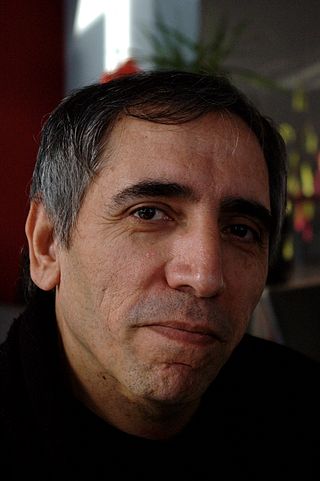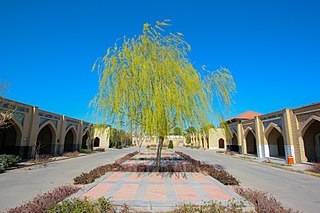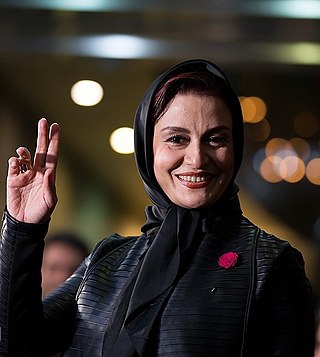Related Research Articles

Mohsen Makhmalbaf is an Iranian film director, writer, film editor, and producer. He has made over 20 feature films, won 50 awards, and been a juror in more than 15 major film festivals. His award-winning films include Kandahar; his latest documentary is The Gardener and latest feature The President.

The cinema of Iran, or of Persia, refers to the film industry in Iran. Particularly Iranian art films have garnered international recognition. Iranian films are usually written and spoken in the Persian language.

Behesht-e Zahra is the largest cemetery in Iran. Located in the southern part of metropolitan Tehran, it is connected to the city by Tehran Metro Line 1.

Reza Kianian is an Iranian actor. He has received various accolades, including two Crystal Simorgh, a Hafez Award and two Iran Cinema Celebration Awards.

Mohammad Reza Golzar is an Iranian actor.

Homa Football Club is an Iranian football club based in Tehran. They currently play in the Tehran Provincial Leagues.

Merila Zarei is an Iranian actress. She is one of the most influential actresses after the Islamic Revolution of Iran, who has appeared in the films of renowned directors such as Asghar Farhadi, Ebrahim Hatami Kia, Pouran Derakhshandeh, Reza Attaran, Abbas Kia Rostami and Masoud Kimiaei.
Iranian New Wave refers to a movement in Iranian cinema. It started in 1964 with Hajir Darioush's second film Serpent's Skin, which was based on D.H. Lawrence's Lady Chatterley's Lover featuring Fakhri Khorvash and Jamshid Mashayekhi. Darioush's two important early social documentaries But Problems Arose in 1965, dealing with the cultural alienation of the Iranian youth, and Face 75, a critical look at the westernization of the rural culture, which was a prizewinner at the 1965 Berlin Film Festival, also contributed significantly to the establishment of the New Wave. In 1968, after the release of Shohare Ahoo Khanoom directed by Davoud Mollapour, The Cow directed by Dariush Mehrjui followed by Masoud Kimiai's Qeysar in 1969, Nasser Taqvai's Tranquility in the Presence of Others, and immediately followed by Bahram Beyzai's Downpour, the New Wave became well established as a prominent cultural, dynamic and intellectual trend. The Iranian viewer became discriminating, encouraging the new trend to prosper and develop.

Emamzadeh Taher, located in Iran in the town of Karaj, is one of the most famous cemeteries in Iran.

A Cube of Sugar is a 2011 Iranian drama film directed by Seyyed Reza Mir-Karimi. It had its world premiere at the Busan International Film Festival on 8 October 2011.
Novin Keshavarz Tehran Volleyball Club also known as Bank Keshavarzi is an Iranian professional volleyball team based in Tehran, Iran.

Razor's Edge: The Legacy of Iranian Actresses is a 2016 documentary written and directed by Bahman Maghsoudlou. The film examines the Iranian film industry, starting in the 1930s and through the Iranian Revolution of 1979. The film features extensive interviews many with the actresses themselves, and clips from films.
The Comprehensive History of Iran is a twenty-volume book series about various aspects of Iran's political, social and cultural history from pre-Islamic times to the extinction of the Qajar dynasty. The research, compilation and writing of this multi-volume book has lasted for 14 years. The first five volumes of this series narrate the period of ancient Iran and the other 15 volumes narrate the history of Iran in the Islamic period, political, social, cultural, scientific, literary and artistic history. One hundred and seventy foreign and domestic authors have been used to write this multi-volume book.